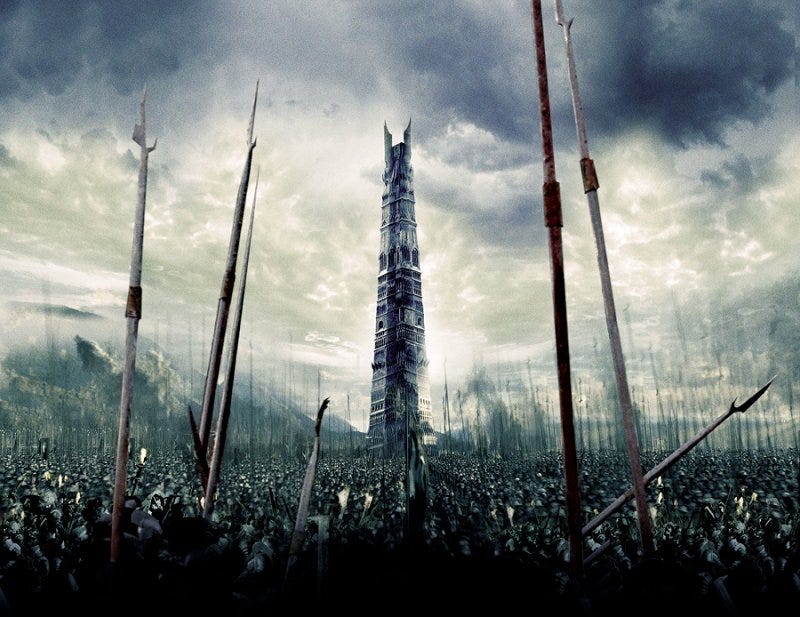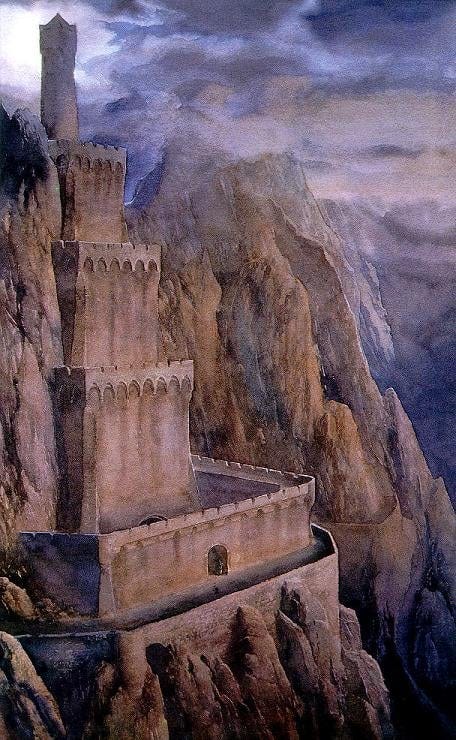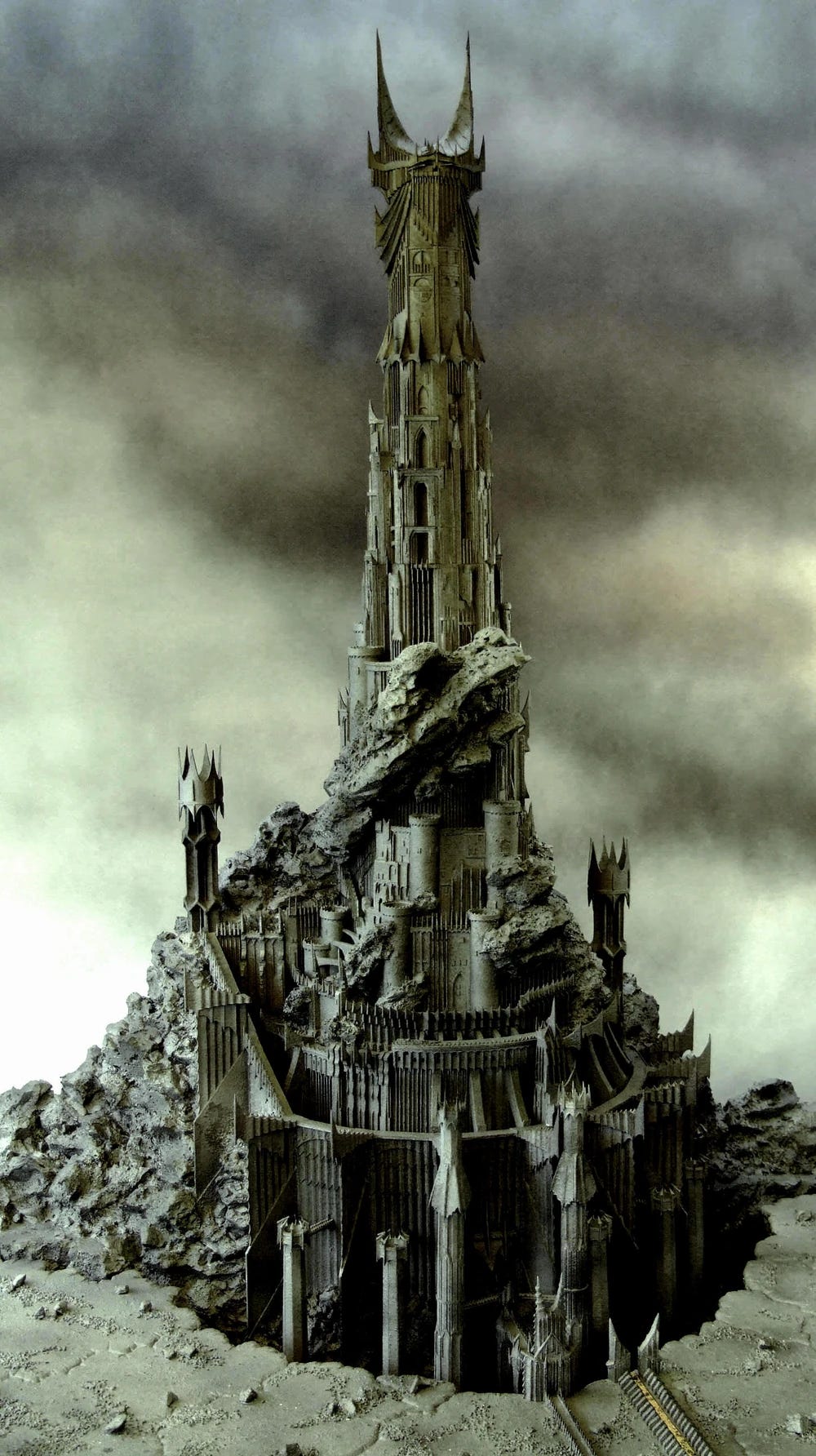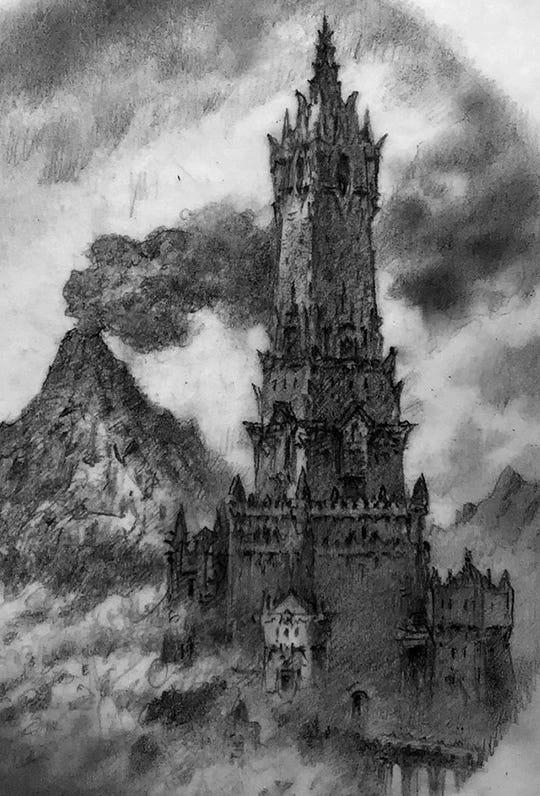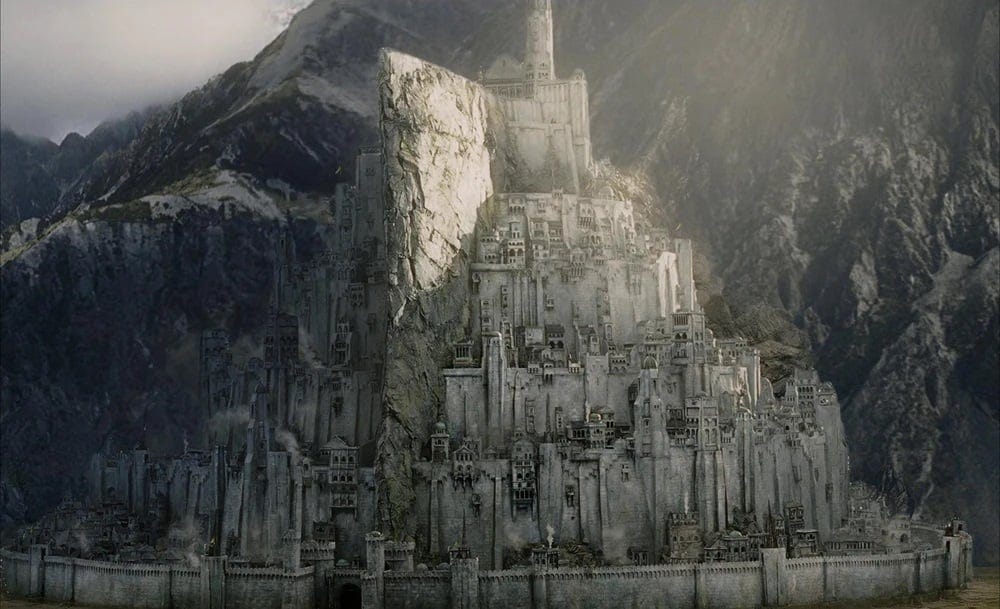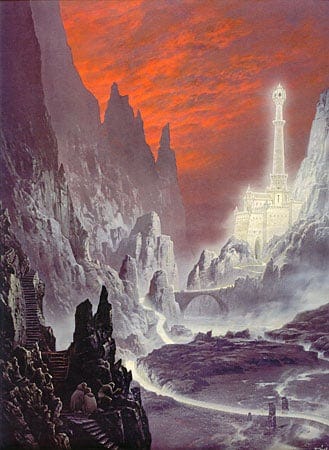The question of which towers are the “Two Towers” in the Lord of the Rings is a common one, and also something that Tolkien himself wrestled with. Eventually he did decide on which two, and he addresses it in a note that appears at the end of some editions of the Fellowship of the Ring.1
The second part is called THE TWO TOWERS, since the events recounted in it are dominated by ORTHANC, the citadel of Saruman, and the fortress of MINAS MORGUL that guards the secret entrance to Mordor.
Shown in the map below are approximate locations of each of the “possible Two Towers.” The dark red and light red represent Orthanc and Minas Morgul respectively, which are the “Two Towers.”
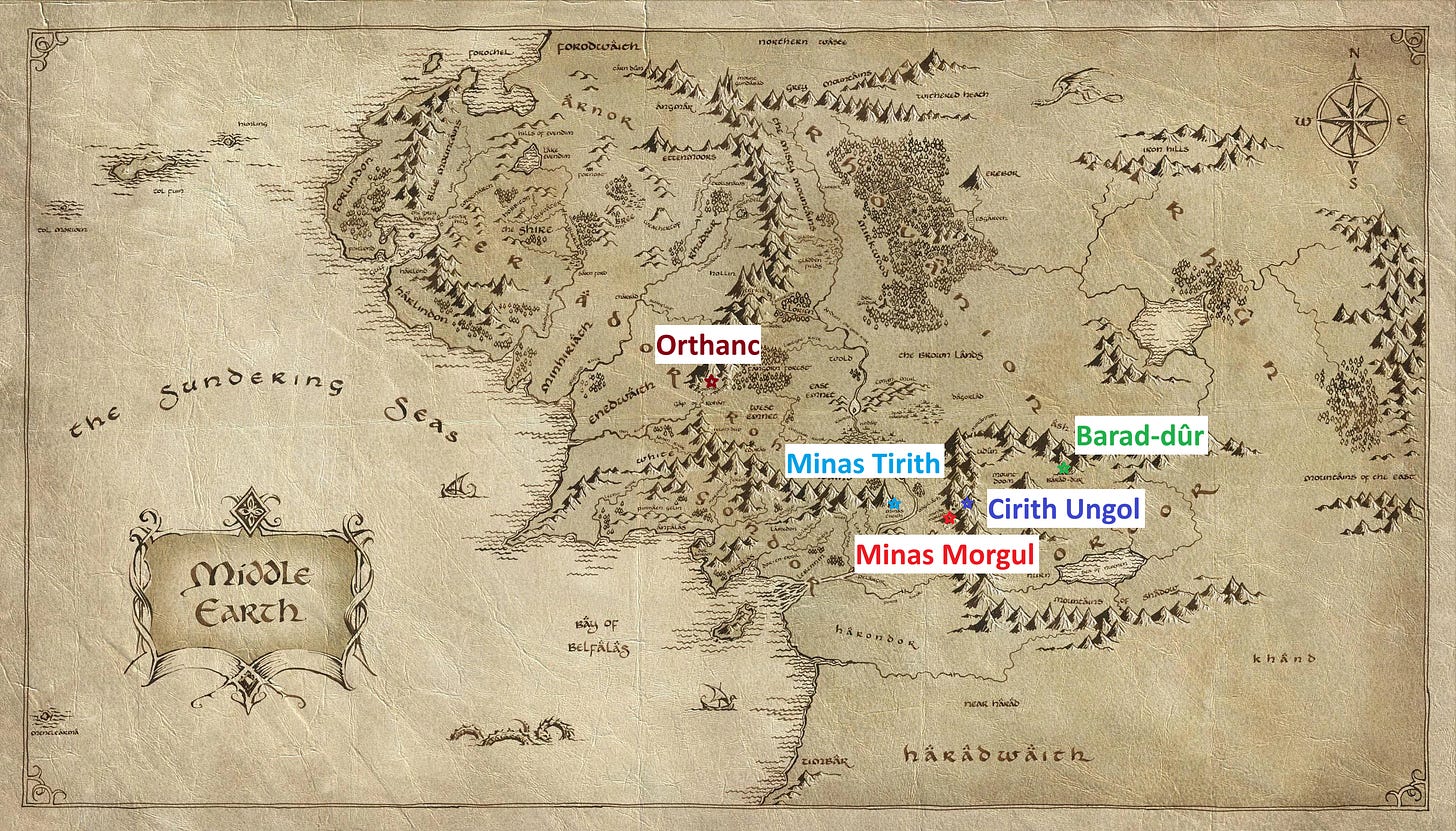
Let’s first consider these 5 tower options, and then examine what these towers represent.
Orthanc
This is the black tower in Isengard that Saruman took over, but was built by Gondorians long before that. In Sindarin, Orthanc means “Mount Fang,” but “in the language of the Mark of old” (Rohanese), it means “Cunning Mind”2—an interesting case where the name has meaning in two languages rather than just one.
The Tower of Cirith Ungol
This is the tower at the pass of Cirith Ungol that Frodo was taken into by orcs and rescued by Sam. In Sindarin, Cirith Ungol means “Spider’s cleft.” This tower was also built by Gondorians but was later taken over by the Ringwraiths.
Barad-dûr
Barad-dûr is Sauron’s fortress in Mordor. The Peter Jackson films portrays the Eye of Sauron as a large eye displayed on the top of this tower. In Sindarin, Barad-dûr means “dark tower.” Unlike the other towers, this was built by Sauron in the Second Age and rebuilt in the Third Age.
Minas Tirith
The city of Minas Tirith (in Sindarin, “Tower of the Guard”) was originally called Minas Anor (“Tower of the Sun” in Sindarin). Minas Tirith was a fortress at first and its construction is put at some time after Gondor was founded.
Minas Morgul
Minas Morgul, when it went by its original name of Minas Ithil, was the twin city of Minas Tirith before Sauron’s forces took it over. In Sindarin, Minas Morgul means “Tower of Sorcery,” and Minas Ithil means “Tower of the Moon” or “Tower of the Rising Moon.”
People often think that the “Two Towers” refers to Orthanc and Barad-dûr, as these are two key areas in the War of the Ring—the tower with the Eye of Sauron and the tower that Saruman took over. There can surely be an argument made for a number of different tower combinations, and I’d like to argue that the combination of Orthanc and Minas Morgul is actually not a bad choice.
Of the five towers I’ve listed here, all were made by men except for Barad-dûr. On the one hand, it could make sense to pick one of the man-made towers and Barad-dûr because it’s signifying that feud. However, I think that choosing two of the man-made towers makes for an interesting choice because both Orthanc and Minas Morgul were originally Gondorian, but fell to Sauron and his forces. This represents the growing and spreading corruption of Sauron’s influence on Middle Earth.
This is also why I think this could even be the better choice than Minas Tirith and Minas Morgul. Because although these two cities were once twin cities of Gondor, with Minas Tirith still occupied by Gondor during the Third Age but Minas Morgul having succumbed to the Enemy, these two cities are fairly close geographically. It’s more impactful to see that Sauron’s influence has spread past Gondor, which is right on Mordor’s doorstep, all the way to Isengard.
Both the fact that these two towers were made by men but fell to darkness and that they’re at a pretty significant distance apart (and therefore farther away from Mordor) show the very real and impending threat of Sauron on Middle Earth. What they represent is, to me, much more consequential than other options, even Orthanc and Barad-dûr because of this.
“Truth or Consequences: A Cautionary Tale of Tolkien Studies,” Hammond and Scull, https://www.hammondandscull.com/papers/Hammond_Scull_Scholars_Forum.html#r50
The Two Towers, The Road to Isengard





